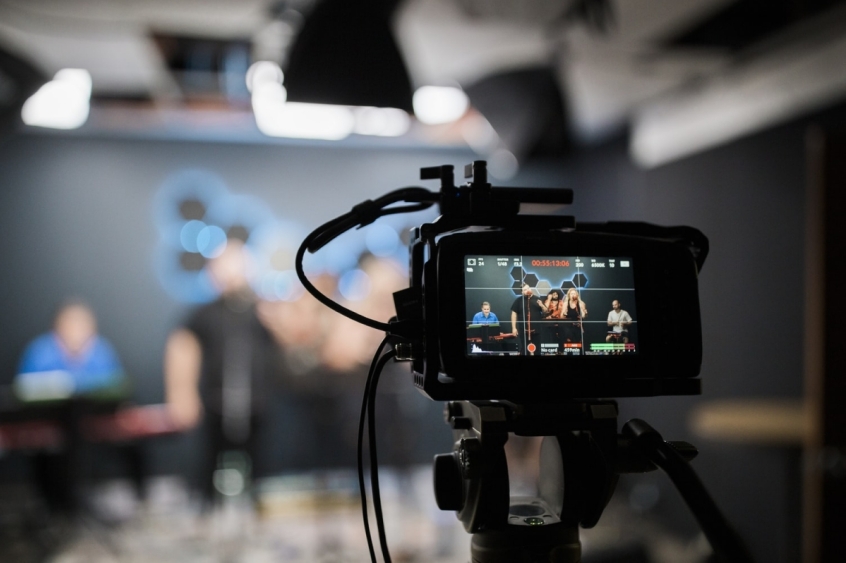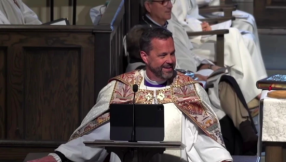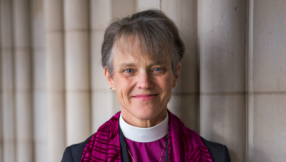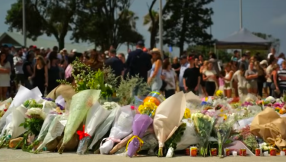
The world of church has changed so much over the last few months, with changes continuing to happen as the Government plays whack-a-mole with virus hotspots. For those not in a hotspot and able to attend church in a building, everything seems so alien - like going to a foreign land and not knowing the customs.
For some who cannot return with others due to illness or disability, it might feel like being one of the Biblical exiles. For larger churches who can only have a few members of their congregation in the building, it may feel like a lottery – your number comes up and you're allowed in!
In the run up to churches opening their doors for worship, I have had lots of churches asking advice on accessibility for returning to the building. Most have already had the conversation about online vs church building. Some are going for a blended church approach (livestreaming the service from the building). Others are doing separate services; one for those who can come to the building and a separate one online for those who cannot meet physically. In other words, doing what fits their church family best.
Then there's what I like to call 'hybrid church', livestreaming not 'from' the building, but 'to' the building. It means everyone gets a similar experience. It also means that those who struggle with technology get to take part without having to wait for a CD on Monday morning, having been given priority for accessing the building. This method also allows for those who cannot come, to take part – to preach, to lead, to publically read or pray, with their contributions pre-recorded or livestreamed onto the screen.
As much as church online has been amazing for many of us with illnesses and disabilities - giving the ability to take part in a way some couldn't in the past - there have been some in our congregations who have not been able to access the internet or use the technology, and they need to attend a physical church if they feel safe and able to.
From the discussions I have had, I have compiled a very basic five point list of things to think of when opening up.
1.ASK:
Talk to medically vulnerable and disabled people in your congregations, not forgetting people with hidden disabilities such as autism. These fellow members will be your best resource in making sure things work for everyone. For many, this has been their normal for years and they are already the experts. Some will have the skills to help put things in place, including the technical stuff needed to make a hybrid approach work.
2.EXPLORE:
Go to specialist organisations for advice – most are listed in the 'Churches for All' Partner page. Look for people who specialise in technologies such as adding subtitles (closed captions) to online and livestreamed materials. Find out what is possible in making the online element accessible to as many people as possible. By doing this, it ensures that what happens in the building is also accessible, making it a better experience for everyone.
3.EXPLAIN:
Take videos or photos of the changes in the church and how things will work. Put these on your website. Explain in clear language what has changed and why. Provide a number and email address for people if they need more information.
For those known to your church as having learning disabilities or being autistic, create a pack with the photos and do a socially distanced visit to explain the changes. You may need help from family or carers to create a social story to explain – just ask them to help. Follow up afterwards to find out if there were any difficulties and make the necessary changes.
4.SHARE:
Talk to other churches and see what you can learn from each other on accessibility. Can you share resources and work together? They may have experts you don't. The joy of the hybrid approach is that you can stream the same service into two buildings! When leadership teams are exhausted and stretched, being able to share teaching and preparation responsibilities could be very welcome.
5.REMEMBER:
Don't forget those with less obvious disabilities and mental health illnesses who may struggle with the changes on many levels. Remember children and young people with additional needs, especially those who may need to wander. Find ways for them to do this safely.
With masks now being compulsory, remember those who rely on lipreading – something many of our older friends do. You may need to invest in the clear masks for your welcome team so instructions can be clearly given to all, with no misunderstandings.
Many have discovered that sermons need to be shorter and simpler for people to follow when streamed. If we can remember to keep that going then it will make services in the building easier for those with learning disabilities and those for whom their illness affects concentration.
Church has never been about preference, although it can easily become that. Church today will not be able to meet many of our preferences. First and foremost, whatever we do should have God at the centre – He is bigger than our preferred worship style. Secondly, because it is a Biblical imperative, we need to protect and care for our most vulnerable. If that means wearing a mask and not singing, then so be it.
Kay Morgan-Gurr is Chair of Children Matter and Co-Founder of the Additional Needs Alliance, part of the Evangelical Alliance Council. For more, www.kaymorgangurr.com and on Twitter @kaymorgan_gurr
Views and opinions published in Christian Today are those of the authors and do not necessarily reflect the views of the website.













